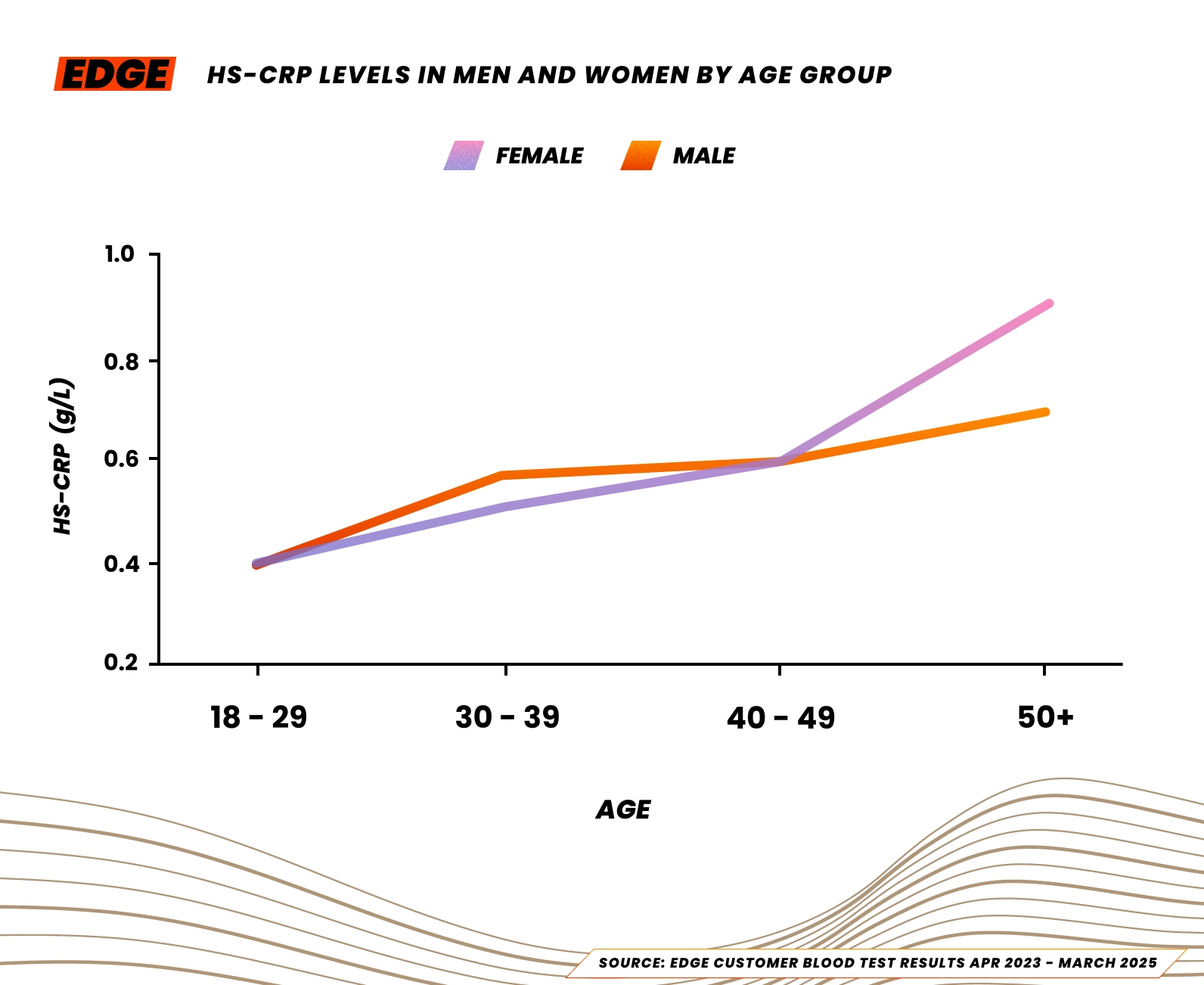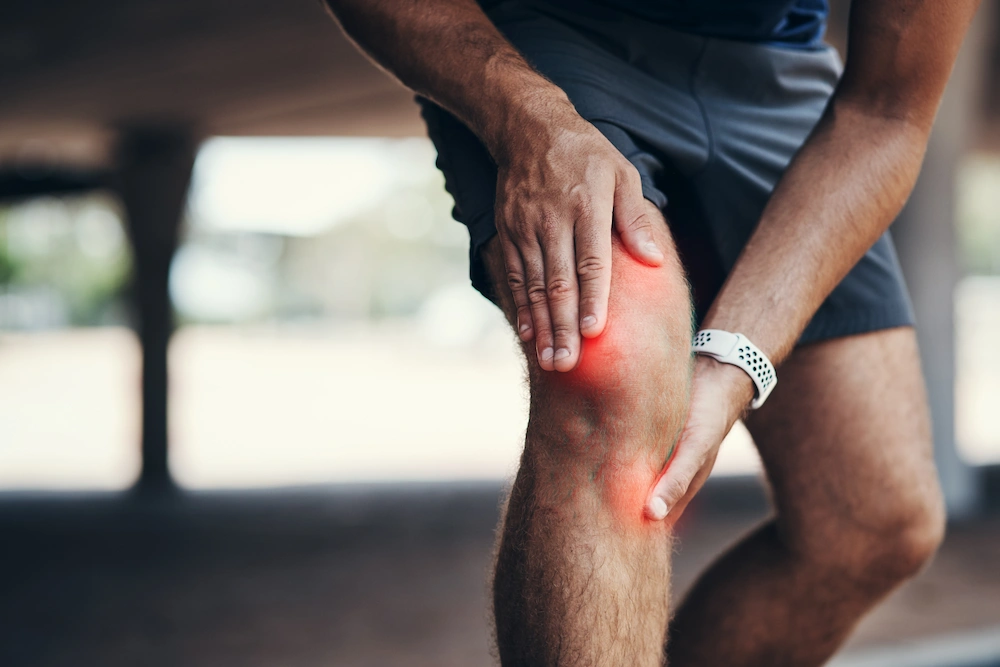What is hs-CRP & why is it important for athletes?
1 min read
Published on
May 22, 2025
Written by
EDGE
Share this article
What Is hs-CRP?
hs-CRP is a marker of inflammation in the body. While some inflammation is a normal part of the training and recovery cycle, persistently elevated levels may indicate systemic stress, poor recovery, or even underlying illness.
For athletes, tracking hs-CRP can provide insight into whether the body is adapting well to training or tipping into overtraining or inflammation-driven fatigue.

"High-sensitivity CRP is a marker of systemic inflammation. While occasional rises post-training are normal, consistently elevated levels can point to chronic inflammation, injury risk or insufficient recovery. I suggest testing quarterly during periods of high intensity or load, and pairing with creatine kinase and cortisol to monitor recovery and training tolerance."
Why Inflammation Matters in Sport
-
Training Stress vs. Chronic Stress
Exercise creates short-term inflammation to stimulate adaptation. But if this inflammation doesn't resolve, it can become chronic, slowing recovery, reducing performance, and increasing injury risk.
-
Recovery Monitoring
Elevated hs-CRP after training or competition is normal. However, consistently high levels between sessions can mean your recovery strategies aren’t keeping up with your training load.
-
Immune Function & Illness
Persistent inflammation can weaken immune response, making athletes more vulnerable to illness, particularly during periods of intense competition or travel.
-
Cardiovascular Insight
hs-CRP is also a marker for cardiovascular health. Monitoring it helps ensure your training is building resilience, not long-term health risks.
What are normal hs-CRP levels for athletes?
We looked at blood test data from EDGE customers and found the median hs-CRP levels for women are 139 mg/L and 153 mg/L for men.
Here is a breakdown of hs-CRP levels by age:
| Table 1: hs-CRP Levels in Men and Women by Age Group (g/L) | ||
| Age Group | Female | Male |
| 18-29 | 0.4 | 0.4 |
| 30-39 | 0.5 | 0.6 |
| 40-49 | 0.6 | 0.6 |
| 50+ | 0.9 | 0.7 |
Source: EDGE customer blood test results Apr 2023 – March 2025.
The labs we used to analyse blood samples state a healthy range for hs-CRP is between 0-5 mg/L.

What Can Raise hs-CRP in Athletes?
-
Intense or prolonged training with insufficient recovery
-
Poor sleep or elevated psychological stress
-
Infections, injuries, or illness
-
Under-fuelling or low carbohydrate availability
-
Chronic inflammation from overtraining or gut health issues
Even a minor cold or poor sleep can spike hs-CRP, so results must always be viewed in context.
When Should Athletes Test hs-CRP?
-
After a tough training block to assess inflammation and recovery
-
When experiencing unexplained fatigue, soreness, or underperformance
-
As part of a RED-S or overtraining screen
-
In conjunction with cortisol and CK for a full view of stress and recovery
How to Manage and Lower Inflammation
-
Prioritise sleep and stress management techniques
-
Include anti-inflammatory foods (berries, oily fish, leafy greens)
-
Avoid training through illness or persistent soreness
-
Ensure carbohydrate intake matches energy output
-
Schedule regular deload or recovery weeks
In Summary
-
hs-CRP reflects systemic inflammation, both acute and chronic
-
High levels can signal poor recovery, infection, or overtraining
-
Helpful for optimising training loads and identifying hidden stress
-
Combine with cortisol, CK, and subjective symptoms for actionable insight
Check Your hs-CRP Levels
Check and monitor your hs-CRP levels from home with our sports blood tests.
Get 10% off your first order
Want regular tips on how to make the most of your results? Join our newsletter and we'll give you 10% off your order!
Get the knowledge
Get expert advice to help you improve your results.
Go to our knowledge center
Fat Burning: The Cold, Hard Truth
Nutrition

What is Runner's knee?
Running

